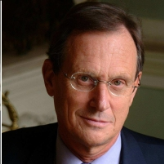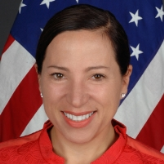Hungary
Hungary occupies an area about the size of Indiana and enjoys a temperate climate. The country was has been a Christian nation since 1100 AD, and was a monarchy for more than 1,000 years. Hungary fought alongside Germany during both world wars. During the Second World War, it lost hundreds of thousands of its citizens, including many Jews and Roma, who were killed or deported by the Nazis. In January 1945, Hungary formed an armistice with Russia and fell under the USSR’s control for the latter half of the 20th Century. In 1956, a nationalistic revolution tried to pave the way for democracy, in which a more liberal climate, along with freedoms of the press, assembly and association were relaxed. The Soviets crushed the effort, but eventually, Hungary became one of the more liberal countries in the Soviet Eastern Bloc. Since the fall of the Soviet Union, the country has endured severe financial problems due to privatization. However, it has undergone far-reaching economic and political reforms to enable its 2004 accession to the European Union.
With roots as a “barbarian” tribe that settled the Danubian plain in the 900s, Hungary became a Christian nation with the conversion of King Steven in 1000. It endured lengthy and damaging invasions from the Tatars, the Ottoman Turks, and ultimately the Habsburgs; finally, after a bloody and unsuccessful revolution in 1848 during which Hungary’s national anthem was composed, the Habsburg Empire became a dual Austro-Hungarian monarchy in 1867. During the 1890s, Budapest, the capital of Hungary, underwent a period of growth and moved towards becoming a center of European culture, art, and architecture. The Austro-Hungarian monarchy ended with World War I, when Hungary was declared a republic and, through the Treaty of Trianon in 1923, lost nearly two-thirds of its territory as well as over half of its population.
The first Hungarian to come to America, according to Hungarian traditions, was a man named Tyrker who traveled with the Viking Eric the Red on his epic journey to Newfoundland around the year 1000.
Noted Hungarian-Americans
During 2003 to 2007, US imports from Hungary were dominated by computer accessories, averaging $650 million annually. Other top imports were electric apparatus and parts, which increased from $84 million to $173.5 million; measuring, testing and control instruments, increasing from $17.8 million to $106.8 million; telecommunications equipment, up from $36 million to $239 million; and passenger cars (new and used), increasing from $21 million (in 2006) to $177.3 million.
Blue Stream Pipeline Threatens to Derail Hungary’s Membership in EU
The State Department reports that Hungarian police used excessive force against suspects and charges of pro-government bias in state-owned media persisted. The perception of corruption in the executive and legislative branches increased as well. There continued to be manifestations of anti-Semitism, including vandalism. Violence against women and children as well as sexual harassment remained problems, as did trafficking in persons. Discrimination against Roma in education, housing, employment, and access to social services continued to be widespread.
 Szapary, Gyorgy
Szapary, Gyorgy
An economist by trade with extensive experience in international finance and banking, György Szapáry took over as Hungary’s ambassador to the United States in January 2011. This marks the first diplomatic post of his career.
- Table of Contents
- News
- Overview
- Basic Information
- History
- Newspapers
- History of U.S. Relations with Hungary
- Current U.S. Relations with Hungary
- Where Does the Money Flow
- Controversies
- Human Rights
- Debate
- Past Ambassadors
- Ambassador to the U.S.
- Embassy Web Site in the U.S.
- Comments
- Leave a comment
U.S. Ambassador to Hungary

On November 6, 2013, Colleen Bradley Bell was nominated by President Barack Obama to be ambassador to Hungary. Obama renominated her on January 6, 2014, when the Senate did not act on her original nomination before the end of the year.
Bell was born on January 30, 1967, in Evanston, Illinois. Her mother, Sheila, was a partner in an interior design firm and her father, Edward, an attorney. Bell went to Sweet Briar College, where she graduated in 1989 with a degree in political science and economics. During her junior year, she studied at the University of St. Andrew’s in Scotland.
In October 1991, she married Bradley Bell, a childhood friend. His parents were involved in show business, with his father William J. Bell a writer for and creator of soap operas, including “The Bold and the Beautiful,” for which Bradley Bell worked. That show was named in 2010 by the Guinness Book of Records as the most popular daytime soap opera.
Colleen Bell also worked on the production of “The Bold and the Beautiful” and is now listed as a producer of the show.
In addition to her production duties, Bell is active with non-profit organizations. She in on the board of the Los Angeles County Museum of Art and in August 2012 was named by Obama to be a trustee of the John F. Kennedy Center for the Performing Arts in Washington. Bell has also been active in pushing for legislative action dealing with global climate change.
Bell was part of the California delegation to the 2012 Democratic Convention. But her main contribution that year was bundling contributions to Obama’s re-election effort. According to The New York Times, she raised more than $2.1 million during 2011 and 2012.
Bell ran into trouble during her nomination hearing before the Senate Foreign Relations Committee on January 16, 2014. Bell had no experience with foreign service or special knowledge about the nation, Hungary, in which she had been nominated to serve. Apparently she had also spent little time studying about U.S.-Hungary relations.
When Senator John McCain (R-Arizona asked her, “What are our strategic interests in Hungary?”, she could do no better than to give a superficial, general response: “our strategic interests, in terms of what are our key priorities in Hungary, I think our key priorities are to improve upon, as I mentioned, the security relationship and also the law enforcement and to promote business opportunities, increase trade… to work collaboratively as NATO allies, to work to promote and protect the security, both—for both countries and for—and for the world.”
The Bells have four children, Bradley, Caroline, Charlotte and Oliver.
-Steve Straehley
To Learn More:
Statement of Colleen Bell Ambassador-Designate to Hungary Senate Foreign Relations Committee (pdf)
Colleen Bell, US Ambassador Designate To Hungary, Before the Senate Foreign Relations Committee (Hungarian Spectrum)
morePrevious U.S. Ambassador to Hungary

Sometimes a political contributor can give handsomely to the losing side and still come out a winner. Eleni Tsakopoulos Kounalakis is one such example. Daughter of a real estate tycoon and California political player, Tsakopoulos Kounalakis raised more than $1 million for Hillary Clinton during her 2008 primary battle with Barack Obama. But once Obama had all but locked up his party’s nomination, the Greek-American millionaire switched camps and supported the man who now has made her ambassador to Hungary. She was sworn in on January 7, 2010.
Hungary occupies an area about the size of Indiana and enjoys a temperate climate. The country was has been a Christian nation since 1100 AD, and was a monarchy for more than 1,000 years. Hungary fought alongside Germany during both world wars. During the Second World War, it lost hundreds of thousands of its citizens, including many Jews and Roma, who were killed or deported by the Nazis. In January 1945, Hungary formed an armistice with Russia and fell under the USSR’s control for the latter half of the 20th Century. In 1956, a nationalistic revolution tried to pave the way for democracy, in which a more liberal climate, along with freedoms of the press, assembly and association were relaxed. The Soviets crushed the effort, but eventually, Hungary became one of the more liberal countries in the Soviet Eastern Bloc. Since the fall of the Soviet Union, the country has endured severe financial problems due to privatization. However, it has undergone far-reaching economic and political reforms to enable its 2004 accession to the European Union.
With roots as a “barbarian” tribe that settled the Danubian plain in the 900s, Hungary became a Christian nation with the conversion of King Steven in 1000. It endured lengthy and damaging invasions from the Tatars, the Ottoman Turks, and ultimately the Habsburgs; finally, after a bloody and unsuccessful revolution in 1848 during which Hungary’s national anthem was composed, the Habsburg Empire became a dual Austro-Hungarian monarchy in 1867. During the 1890s, Budapest, the capital of Hungary, underwent a period of growth and moved towards becoming a center of European culture, art, and architecture. The Austro-Hungarian monarchy ended with World War I, when Hungary was declared a republic and, through the Treaty of Trianon in 1923, lost nearly two-thirds of its territory as well as over half of its population.
The first Hungarian to come to America, according to Hungarian traditions, was a man named Tyrker who traveled with the Viking Eric the Red on his epic journey to Newfoundland around the year 1000.
Noted Hungarian-Americans
During 2003 to 2007, US imports from Hungary were dominated by computer accessories, averaging $650 million annually. Other top imports were electric apparatus and parts, which increased from $84 million to $173.5 million; measuring, testing and control instruments, increasing from $17.8 million to $106.8 million; telecommunications equipment, up from $36 million to $239 million; and passenger cars (new and used), increasing from $21 million (in 2006) to $177.3 million.
Blue Stream Pipeline Threatens to Derail Hungary’s Membership in EU
The State Department reports that Hungarian police used excessive force against suspects and charges of pro-government bias in state-owned media persisted. The perception of corruption in the executive and legislative branches increased as well. There continued to be manifestations of anti-Semitism, including vandalism. Violence against women and children as well as sexual harassment remained problems, as did trafficking in persons. Discrimination against Roma in education, housing, employment, and access to social services continued to be widespread.
 Szapary, Gyorgy
Szapary, Gyorgy
An economist by trade with extensive experience in international finance and banking, György Szapáry took over as Hungary’s ambassador to the United States in January 2011. This marks the first diplomatic post of his career.
Comments
U.S. Ambassador to Hungary

On November 6, 2013, Colleen Bradley Bell was nominated by President Barack Obama to be ambassador to Hungary. Obama renominated her on January 6, 2014, when the Senate did not act on her original nomination before the end of the year.
Bell was born on January 30, 1967, in Evanston, Illinois. Her mother, Sheila, was a partner in an interior design firm and her father, Edward, an attorney. Bell went to Sweet Briar College, where she graduated in 1989 with a degree in political science and economics. During her junior year, she studied at the University of St. Andrew’s in Scotland.
In October 1991, she married Bradley Bell, a childhood friend. His parents were involved in show business, with his father William J. Bell a writer for and creator of soap operas, including “The Bold and the Beautiful,” for which Bradley Bell worked. That show was named in 2010 by the Guinness Book of Records as the most popular daytime soap opera.
Colleen Bell also worked on the production of “The Bold and the Beautiful” and is now listed as a producer of the show.
In addition to her production duties, Bell is active with non-profit organizations. She in on the board of the Los Angeles County Museum of Art and in August 2012 was named by Obama to be a trustee of the John F. Kennedy Center for the Performing Arts in Washington. Bell has also been active in pushing for legislative action dealing with global climate change.
Bell was part of the California delegation to the 2012 Democratic Convention. But her main contribution that year was bundling contributions to Obama’s re-election effort. According to The New York Times, she raised more than $2.1 million during 2011 and 2012.
Bell ran into trouble during her nomination hearing before the Senate Foreign Relations Committee on January 16, 2014. Bell had no experience with foreign service or special knowledge about the nation, Hungary, in which she had been nominated to serve. Apparently she had also spent little time studying about U.S.-Hungary relations.
When Senator John McCain (R-Arizona asked her, “What are our strategic interests in Hungary?”, she could do no better than to give a superficial, general response: “our strategic interests, in terms of what are our key priorities in Hungary, I think our key priorities are to improve upon, as I mentioned, the security relationship and also the law enforcement and to promote business opportunities, increase trade… to work collaboratively as NATO allies, to work to promote and protect the security, both—for both countries and for—and for the world.”
The Bells have four children, Bradley, Caroline, Charlotte and Oliver.
-Steve Straehley
To Learn More:
Statement of Colleen Bell Ambassador-Designate to Hungary Senate Foreign Relations Committee (pdf)
Colleen Bell, US Ambassador Designate To Hungary, Before the Senate Foreign Relations Committee (Hungarian Spectrum)
morePrevious U.S. Ambassador to Hungary

Sometimes a political contributor can give handsomely to the losing side and still come out a winner. Eleni Tsakopoulos Kounalakis is one such example. Daughter of a real estate tycoon and California political player, Tsakopoulos Kounalakis raised more than $1 million for Hillary Clinton during her 2008 primary battle with Barack Obama. But once Obama had all but locked up his party’s nomination, the Greek-American millionaire switched camps and supported the man who now has made her ambassador to Hungary. She was sworn in on January 7, 2010.







Comments